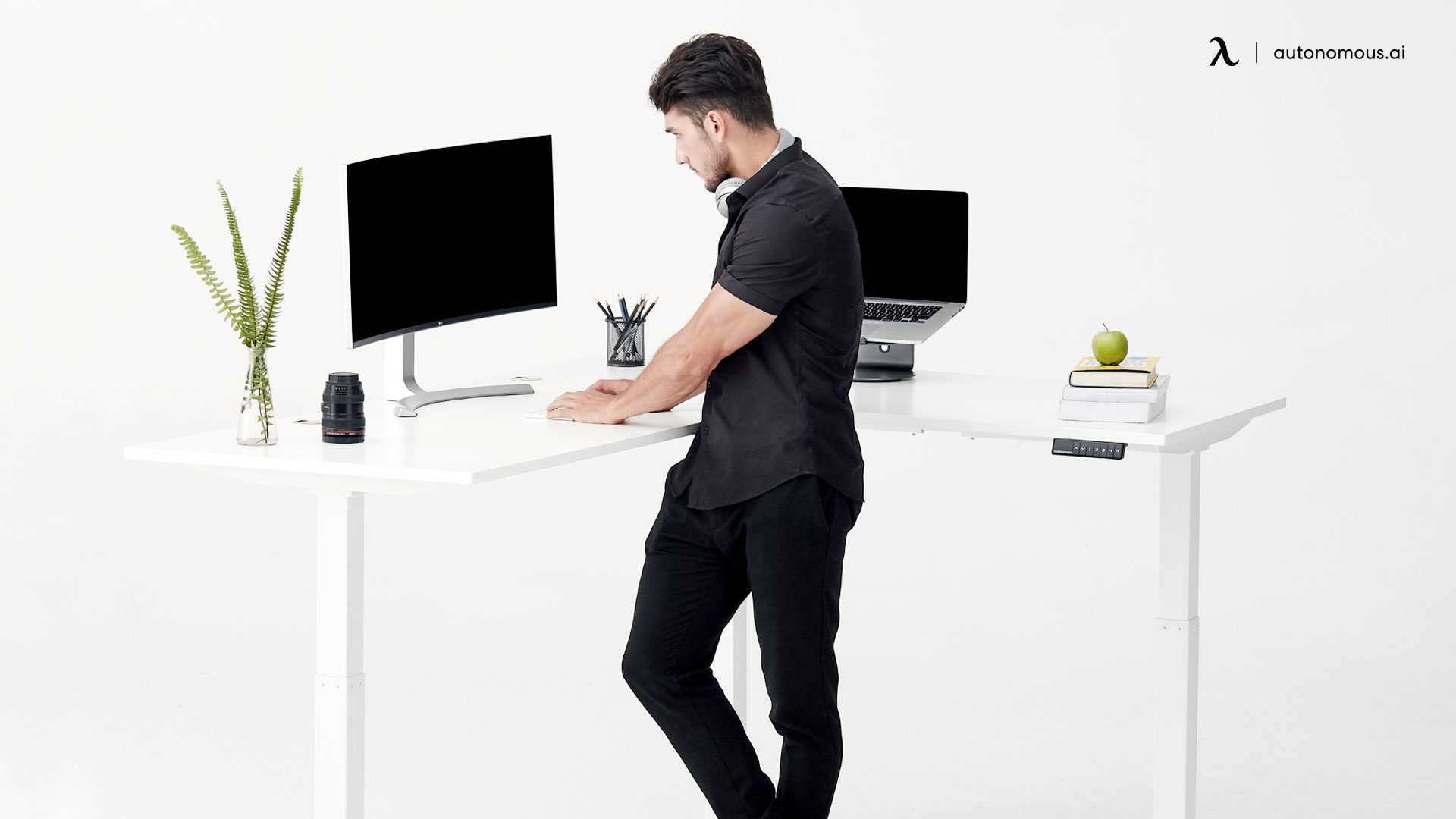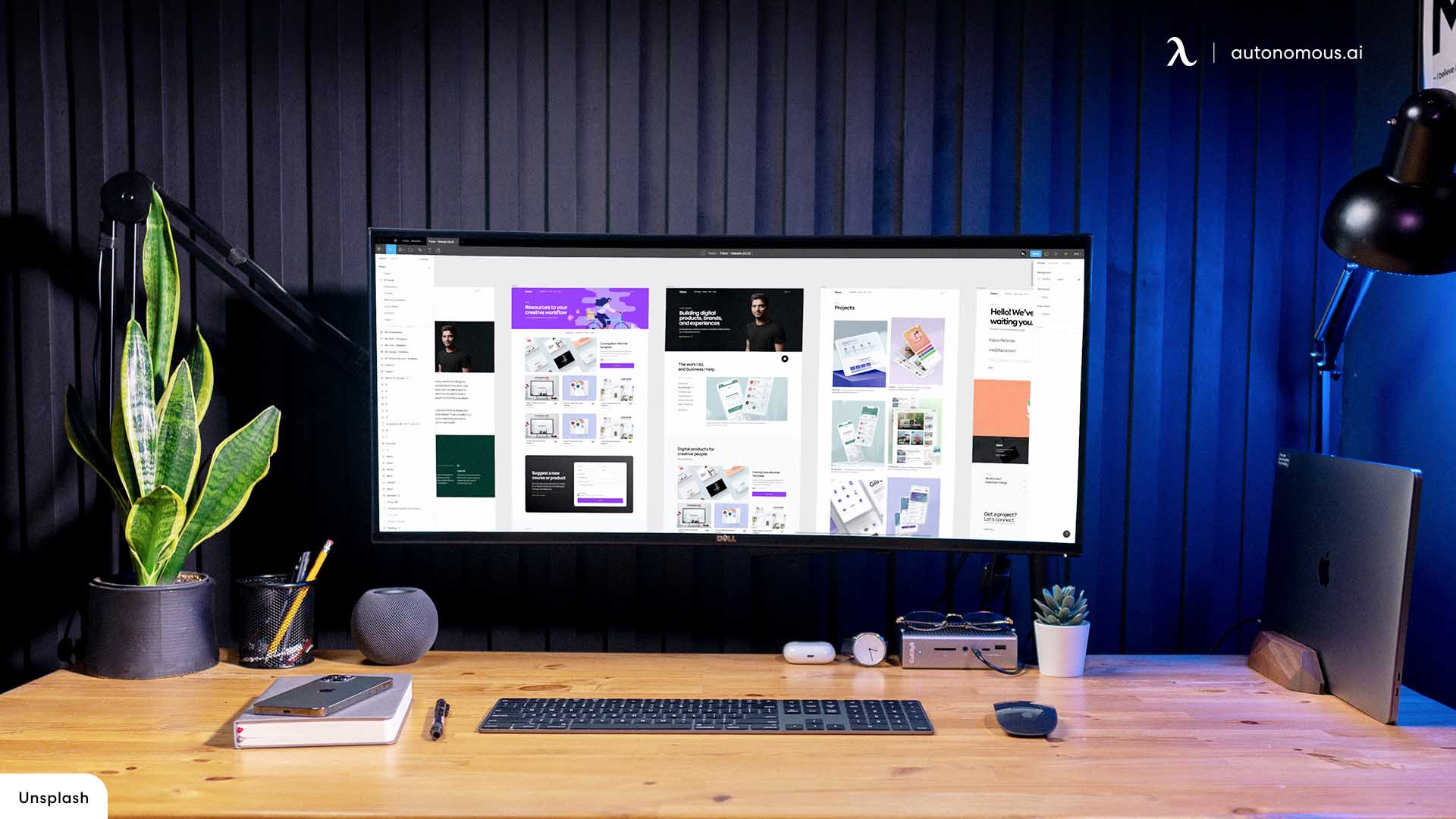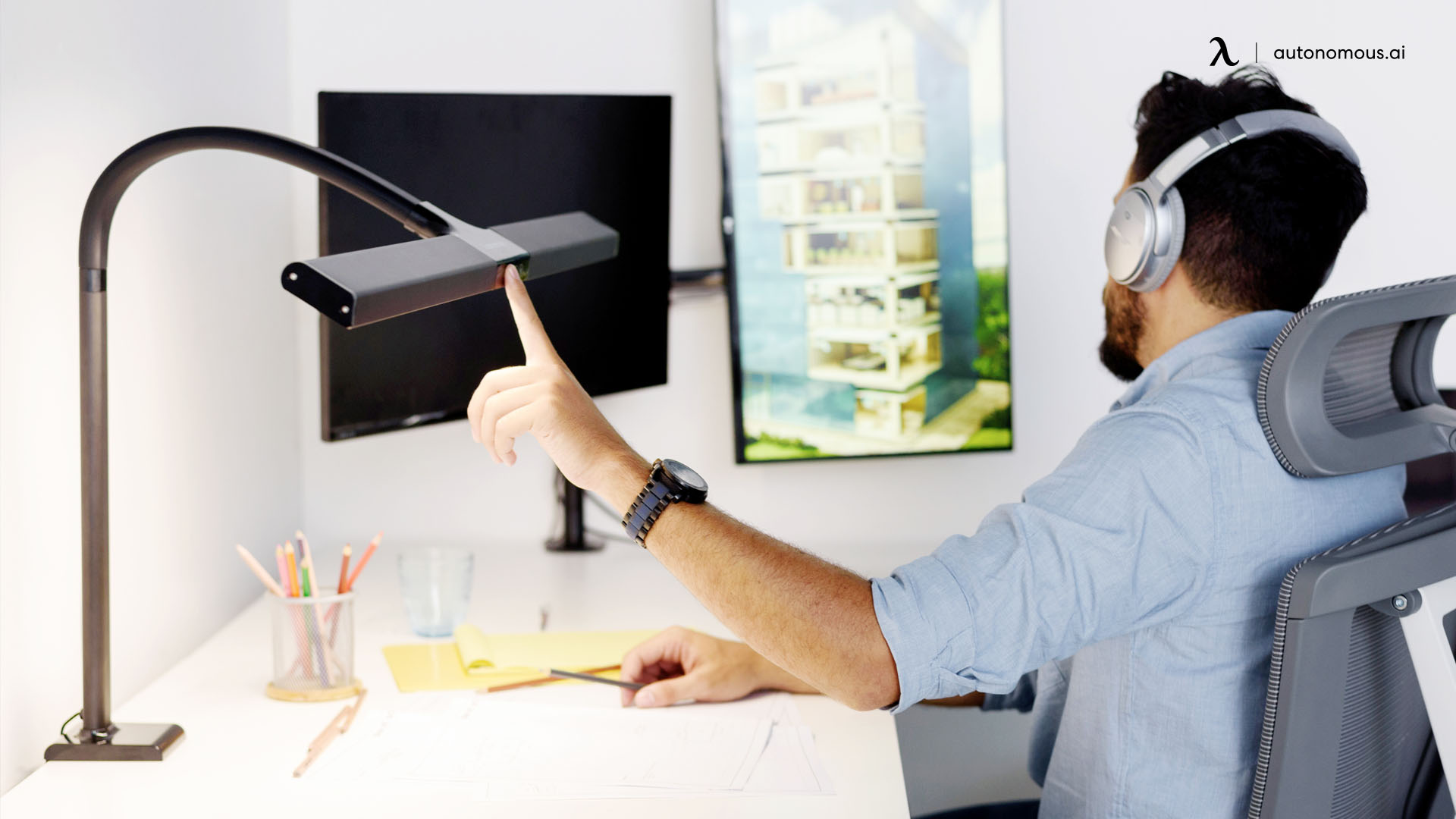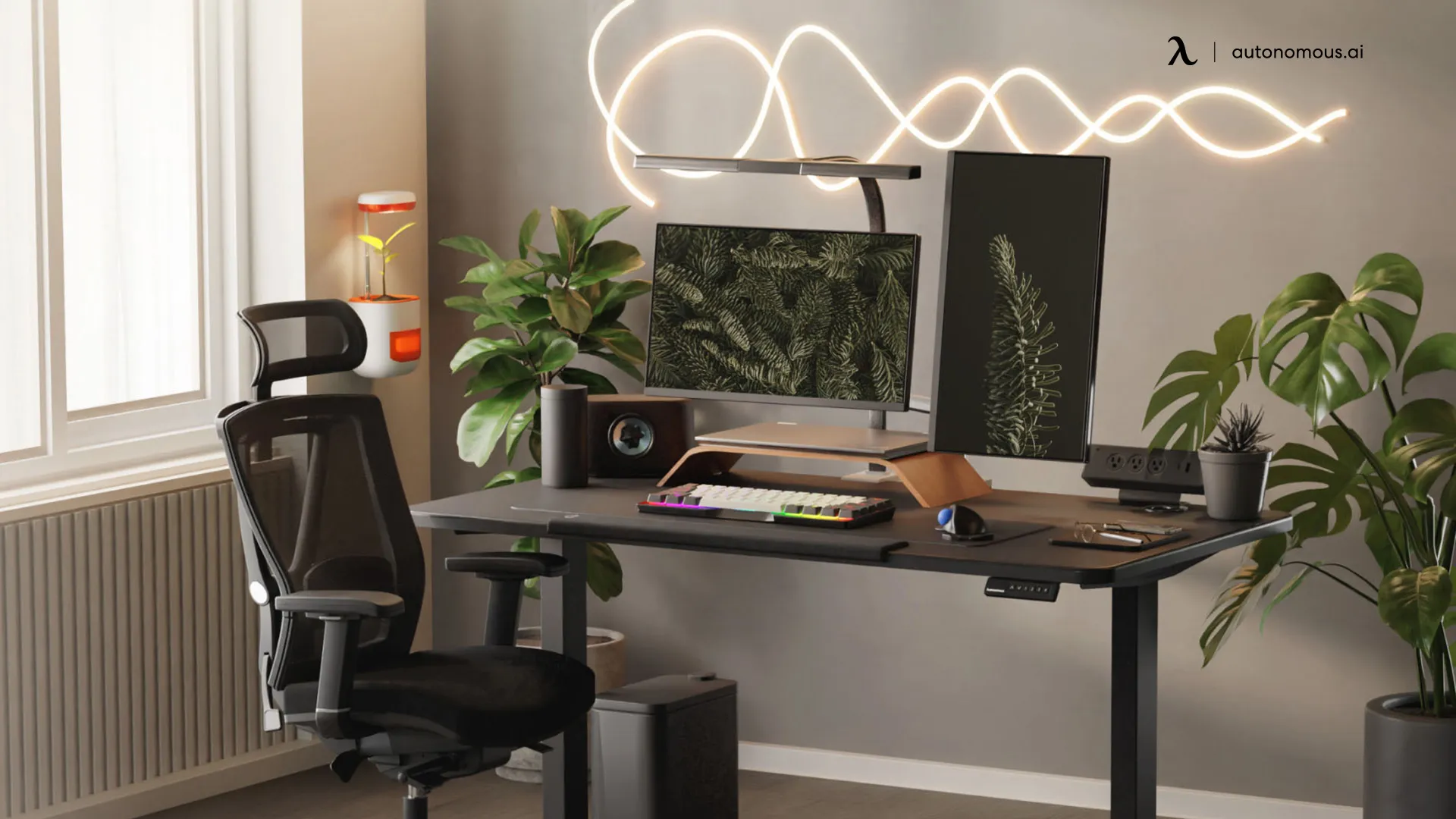/https://storage.googleapis.com/s3-autonomous-upgrade-3/production/ecm/250116/photographer-desk-setup-a-complete-guide.jpg)
Photographer Desk Setup: A Complete Guide for Productive Workspace
Professional photographers have many possible working environments depending on their specialty, but many spend most of their time working in their home studio or workspace. After taking their photos, they go home, edit the images they took on their desktop computer or laptop, talk to their clients, manage their portfolio, among other things. For this reason, having a proper photographer desk setup is essential for them to stay productive and focused on their job.
What Does a Photographer Need to Have a Productive Workspace?
There are many things that professional photographers can get for their room to make it a better workspace.
It’s essential to keep your home office clean and organized to avoid feeling cramped and uncomfortable while doing your job. Being content with your workspace can positively improve your efficiency and reduce your stress. Here is a list of the things you can get to better your photographer’s workspace and make it a more productive one:
1. Appropriate Working Desk
An essential aspect of a photographer’s office is the working desk itself. Getting a suitable desk for a photographer’s workspace goes a long way in improving your office environment, as it is where most of the work is done. It must be able to house your monitor and photography gear and tools comfortably while leaving ample space for other things.
We recommend getting an office standing desk, as they provide a lot of versatility for your home office room. Home standing desks like SmartDesk 2 (Standard) provide an ergonomic option that improves your workflow and enhances your workplace’s aesthetics with a minimalistic design that fits in every setting. Their most prominent feature is its height adjustability, letting you set up your photography desk the way that best suits you.

If you find that a standing desk is too small for your photographer desktop computer, you don’t need to worry as there are even large L-Shaped desks for photographers that come with a fully adjustable height on a sturdy steel frame. Space isn’t a concern when you’re using these desks that can fit more than one person.
Another benefit of the standing desk is that it allows for their users to be active. When you tire of sitting, you can simply raise the desk’s height to allow yourself to work some time while standing.
2. Ergonomic Chair
Photographers often spend a lot of time sitting and doing work on their photographer desktop computer, making the option of getting a comfortable office chair both enticing and beneficial.
If you have a poor chair, you may eventually find yourself developing a bad posture that can cause your back, shoulders, and neck to ache, significantly disrupting your efficiency. In the long run, bad posture can cause significant harm to your wellbeing.
A good chair can improve your comfort, enjoyment, and productivity during your workday. If you want a chair that guarantees these benefits and more, you should get an ergonomic chair. These chairs are the perfect fit for a photographer desk setup, fitting many body sizes and improving your posture, making work a rewarding and cozy experience.

The best ergonomic chairs can be tailored to suit your needs perfectly. They are very comfortable and tend to use breathable mesh to make them fresher. These chairs also provide you with adjustable lumbar support and seat height that lets you maintain a healthy posture regardless of body size. Their armrest range of motion depends on the chair you buy, but as long as it moves in three dimensions, it can be easily adjusted to anyone.
If you get an ergonomic chair, you only need to correctly adjust it to your office desk setup to make the most of it. There are a couple of steps or indications to follow to accommodate your chair successfully. It begins with setting your seat’s height in a place where your feet are flat on the floor and your thighs parallel to the ground, removing pressure from your knees. Your armrest should then support your arms at a 90-degree angle, letting you use your photographer's desktop computer while leaving your wrist and hands straight and relaxed.
Although ergonomic chairs go well when paired with standing desks, there are ergonomic stools specifically made for these kinds of desks. These stools let you comfortably work in a slightly tilted standing position, making your work an active and engaging activity.
3. Good Monitor for Editing
Getting the right monitor for your photographer desk tour is essential to get the best results in your job. A high-quality monitor with high resolution lets you work more efficiently by allowing you to view your images in clear detail. The most important thing to consider when getting a monitor for photo editing is its color display accuracy; the better it is, the more it benefits your edits and color grading.
Laptops have small displays with very low resolution, which makes them challenging to work on for editing. Fortunately, most laptops built these last years have an HDMI port that lets you plug them into a TV screen or a monitor, giving you the needed larger display to work comfortably, should you have one. Though calibrating the TV screen’s display is harder to do compared to desktop monitors.
If you want to maximize your efficiency, get a desktop computer with multiple monitors, multiple displays, and a laptop for good measure. Overall, the desktop is the most efficient workstation of the two, and with multiple screens, you can spread out your programs and multi-task. Although, the laptop is always convenient for its portability, letting you work outside your workspace.
You can get a desk riser for your laptop, which works on a mechanism that sits on your desk, allowing you to elevate and slightly tilt your laptop’s angle. Having the display at an appropriate eye-level minimizes the strain on your eyes and lets you sit with a correct posture. It’s an adequate ergonomic solution that also helps your typing posture and enables you to preemptively avoid things such as carpal tunnel syndrome, which stems from awkward and repetitive wrist movements.
There are also all-in-one computers that have every needed component built into their monitor, making them stylish and economical for your photography desk space. Still, when you get these all-in-ones, you lose the laptop’s portability and the desktop’s modularity. They also don’t have video outputs, meaning you’re stuck with the computer’s display.
4. Input Devices and Other Hardware
When your work consists mostly of editing your digital photos on your photographer desktop computer or laptop, having suitable input devices can help you work a little better. A keyboard and other input devices with ergonomic grips may let you edit your photos more accurately while being comfortable to use.
Another option is to get wireless ergonomic input devices that sacrifice responsiveness while making them more convenient to use. They improve your workspace’s flexibility by letting you work from anywhere in the room. Being cordless also makes your photography desk look tidier.

You likely have multiple hard disk drives or solid-state drives to store and backup all of your photos. If you don’t, you should immediately go and get some. Both raw and processed images take up plenty of disk space, and you’re sure to run out of it quickly. It would be best if you remembered to label their contents by date, event, year, or by your personal preference.
Photographers who still use film need to use photo scanners to digitize their photos. Even if you don’t use film, you may want to get a scanner in case you chance upon some old prints or negatives tucked away. Most scanners nowadays can be used for general-purpose scanning, and some even have character recognition software that can digitize documents. You should get a dedicated film scanner if you want the best possible results on your film negatives and transparencies.
5. Lighting
It’s one of the most critical aspects of the photographer desk setup, as it can directly affect your photography work’s results. The workspace’s brightness should be about average, and you should avoid direct light on your editing monitor. When the room is too bright, you may end up with dark images as you unconsciously compensate for the light. Other than that, just making sure that light doesn’t directly hit the display is enough to avoid most issues.
If you want to light up your photography desk while avoiding glare or interference on your display, having a dedicated LED desk lamp can help, especially during late-night projects. These desk lamps not only light up your desk thoroughly, but their glow can also reach the corners of your workspace. Many of these also come with adjustable brightness level options and color temperature modes, in case you want to fine-tune your lamp to give appropriate lighting. Having good lighting can lessen your eyes’ strain, better your mood, and make you more productive.

When the room has windows, it’s crucial to invest in black-out roller blinds. The natural light coming from it can hit the monitor’s display, which in turn affects your color-sensitive editing work. With a black-out roller blind, you can pull them down and switch out the lights when you need a dark room to edit your photos or do sharp color correction or grading.
One light fixture that’s currently being endorsed for photo editing workspaces is a backlight or bias light. These fixtures go directly behind your photographer desktop computer display, illuminating the area around it. It has an alluring look and completely avoids straining your eyes while increasing the image’s perceptive contrast.
6. Wall Color
The wall’s colors can significantly affect your color correction, grading, and photo editing in general. You need to have a neutral color environment if you want to have a proper photographer desk setup. That color is precisely 18% gray or middle gray, and its name comes from the position it occupies on the CIE lightness scale, which is approximately between black and white. The percentage refers to how much visible light the middle gray color reflects.
This wall color helps you keep your perception of color constant. If you have different colored walls, the light it reflects affects your work’s output. For example, if the walls are blue, your perception of that color is altered, making you unable to see blue tones in your footage correctly. Your eyes can establish a color and brightness guideline based on the gray-colored wall’s neutral point.
Unfortunately, this paint can be a little expensive, but its results are unmatched. When you do get it, you must coat any wall in your view and peripheral vision.

7. Storage Space
Every shoot needs different camera lenses, so you need to properly store them to make it easier for you to find them. Having your stuff cluttering the workspace does negatively affect your workflow, causing unneeded stress and tension. It’s entirely up to you whether you want them neatly on sight or tucked away into your photography bag. The latter you can put in a closet or near your desk for photographers.
You can also put your gear, backdrops, props, and other components in proper storage containers, such as storage boxes, walk-in closets, and open cabinets. The only thing you need to ensure is that it’s big enough to fit your photography gear. In the end, some professional photographers prefer to have their equipment on display, and some choose to store it away safely.
You can also get wall shelves and brackets that can go above your photography desk. That way, you clean up your desk a little while making sure that anything you use frequently is near your reach.
If you still keep physical documents, photos, or other varied things, getting a small file cabinet along with some binders and carpets is an efficient way of organizing and categorizing your things.
There are many different things and elements that you can incorporate into your photographer desk setup, but you don’t need to make a perfect office to get started. You can keep working while gradually turning your workspace into an ideal photographer’s home office.
Stay connected with us!
Subscribe to our weekly updates to stay in the loop about our latest innovations and community news!
Interested in a Link Placement?
Spread the word
.svg)
.svg)



/https://storage.googleapis.com/s3-autonomous-upgrade-3/production/ecm/230914/bulk-order-sep-2023-720x1200-CTA-min.jpg)

/https://storage.googleapis.com/s3-autonomous-upgrade-3/static/upload/images/new_post_author/admin-1.png)